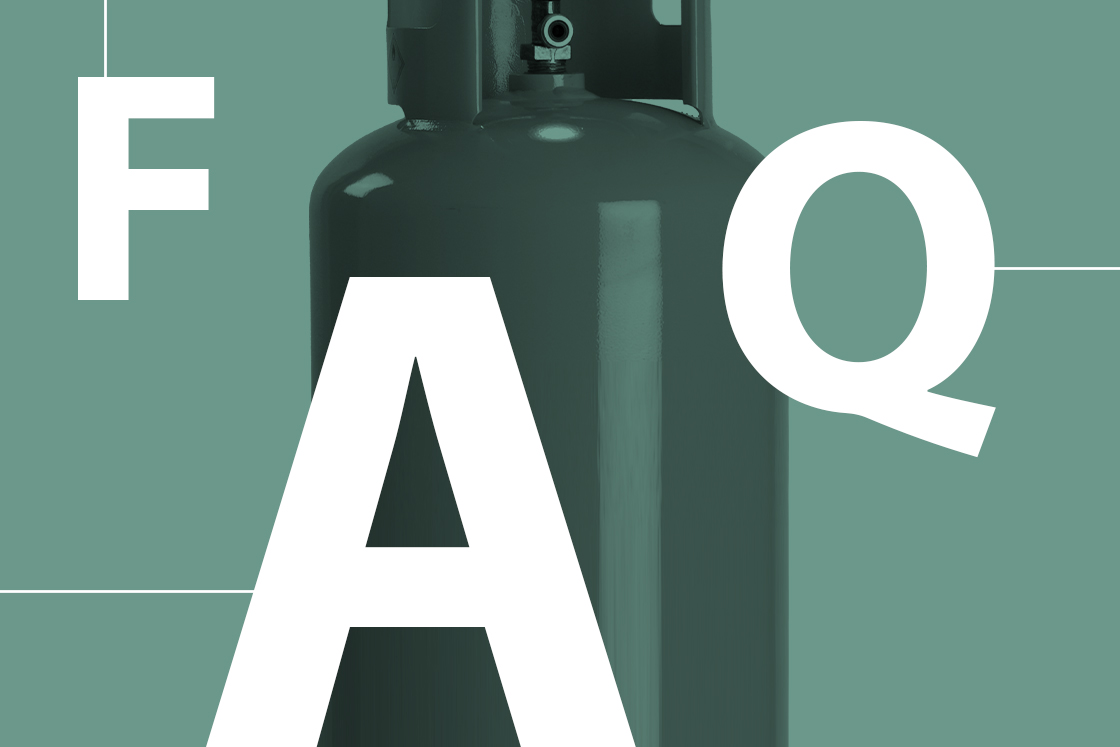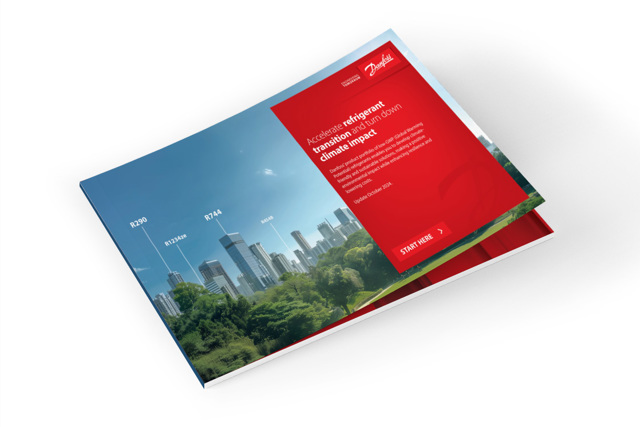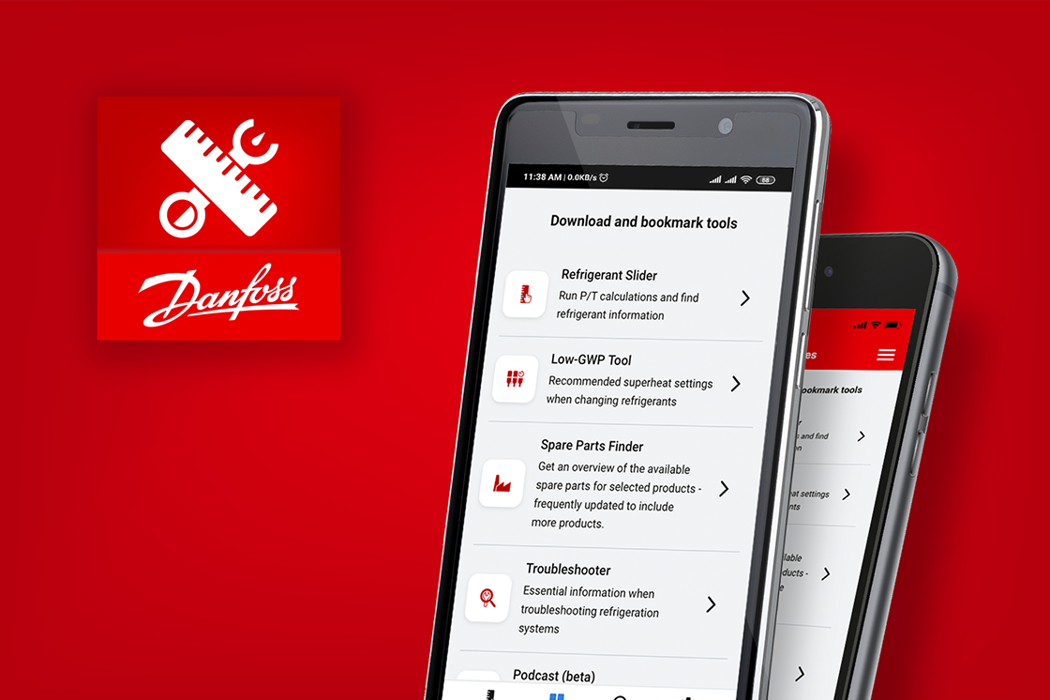
New charge limits for flammable refrigerants: your questions answered
Earlier in 2019, the International Electrotechnical Commission (IEC) revised its safety standard IEC 60335-2-89, and increased the charge limit for flammable refrigerants in self-contained commercial refrigeration appliances.
This is important news, as the move to low global warming potential (GWP) refrigerants will mean commercial refrigeration will make increasing use of flammable refrigerants like propane (R290) and isobutane (R600a).
However, the change has the potential to cause some confusion. For example, the new charge limits will take effect in different countries at different times, cover some applications but not others, and depend upon the size of a room where the unit can be used. To help, we’ve answered some common questions about the new limits.
What are the new charge limits for flammable refrigerants under IEC 60335-2-89?
The charge limits have increased from 150g to 500g for the most flammable A3 refrigerants. For mildly flammable alternatives (A2 and A2L), the limit has increased from 150g to 1.2kg.
But the new, higher limits only apply to some applications, and only in rooms of a certain size. They will also take time to be reflected in revisions to national-level regulations.
When will the new charge limits come into force?
It’s difficult to tell, and it will vary between countries. This is because the international IEC standard is a voluntary international recommendation. To have any legal power, it will need to be reflected in each country’s local safety regulations like the ASHRAE standards, UL 60335-2-89 in the United States, EN 60335-2-89 in Europe, and China’s GB9237.
In many cases, standards are reviewed on a strict schedule, so there could be up to a five-year delay before the new limits are officially reflected in national law.
Is there a way to develop systems with the new, higher limits now?
Ultimately, manufacturers are responsible for the safety of the units they produce. In many countries, there is the option to conduct a separate risk assessment, outside of the local regulations – for example, under the European refrigeration standard EN 378.
Arguably, a manufacturer could use the new, international standard as justification for its risk assessment that – subject to the restrictions set out in the document – the new, higher limits are safe.
I heard the proposed increases had been rejected?
Initially, the IEC decided against the increases by one “no” vote. However, this “no” vote was later challenged and overturned.
The situation caused some confusion in the market, but the new limits have now been adopted by the IEC, and are included in the revised wording for IEC 60335-2-89.
Which refrigeration systems are covered by the new, higher charge limits?
The revised standard applies to electrically-operated commercial refrigerating appliances – including ice makers, for the first time. It also includes:
- Multi-desk display cabinet
- Glass door merchandisers
- Bottle coolers
- Serve-over cabinets
- Blast freezers
- Reach-in cabinets
- Gondola cabinets
- Gelato counters
- Preparation counters
- Ice-cream freezers
Draft beverage coolers are included if the compressor is integrated within the countertop housing, and is not external to the unit.
However, the revised standard does NOT apply to walk-in display coolers, ice-cream dispensers, water dispensers or walk-in cold rooms.
Appliances that include any refrigerating circuit with a refrigerant charge of 150g of flammable refrigerant or more are affected by the standard. As such they must be built and installed so their operation doesn’t cause excessive vibration or resonance points in the piping connected to the motor-compressor.
Compliance with the standard is assessed based on whether:
- The appliance is installed in line with installation instructions and is supplied at rated voltage or at the upper limit of the rated voltage range
- Supply frequency to any non-variable speed motor-compressors is varied in 1Hz steps between 0.9 times and 1.1 times the rated frequency
- The supply frequency from the inverter to variable speed motor-compressors is increased in 1Hz steps from minimum frequency to maximum frequency over the speed range in the appliance
- The vibration amplitude is measured at points in the piping with a large amplitude
- When measured with a low pass filter at 200Hz, vibrations stay below an acceleration of 0.3g RMS in refrigerant-containing parts
- Measurement sensors do not influence the line vibration level
Do the IEC 60335-2-89 rules place any restrictions on system design?
The revised IEC 60335-2-89 flammable refrigerant rules apply to appliances where the compressor is contained inside the main appliance housing.
Other restrictions include:
- Remote condensing units should not have more than 150g of flammable refrigerant in any one refrigerating circuit.
- Systems with flammable refrigerant must be hermetically sealed—so soldered connections are acceptable but flare connections are not. Other connections, such as O-rings and Schraeder service valves may be acceptable, depending on their design.
- The rules only apply to refrigerants with a molar mass of at least 30kg/kmol. That is, refrigerants that are heavier than air, so will sink if they leak.
- When the system runs, it should not generate excessive vibration in the compressor or the piping that leads to it. You’ll find more detail on how this is defined below.
Does the new limit apply to one circuit, or the whole system?
The flammable refrigerant charge limits in IEC 60335-2-89 are per circuit. It is possible to have a greater charge in a system if there are multiple circuits. This is considered safe, as the main risk is from a leak rather than an ignition in the system itself.
How are minimum room sizes calculated for a flammable refrigerant?
To prevent an explosive atmosphere in the case of a leak, units with charges above a certain limit can only be used in rooms exceeding a minimum floor size.
This room size is calculated based on the refrigerant charge, and the lower flammability limit (LFL) of the refrigerant. The manufacturer needs to display the restriction prominently, on a standard label complying with IEC 60417-6415.
The minimum room size (in m2) is equal to:
- the refrigerant charge (in kg), divided by
- one quarter of the LFL (in kg/m3) multiplied by 2.2 (the assumed height of the room)
So, for example, a system with 153g of R290 would require a minimum floor area of:
0.153kg / 2.2m x (0.25 x 0.038kg/m3) = 7.3m2
But a system with 494g of R290, the required area is much greater:
0.494kg / 2.2m x (0.25 x 0.038kg/m3) = 23.6m2
Whose responsibility is it to ensure the room size instructions are followed?
The manufacturer must ensure the calculations are correct and that the unit is labelled correctly, in a way that meets the standard. But it is the responsibility of the user to ensure the unit is installed in a way that complies with the regulations.
Can you have several flammable refrigerant units in one room?
Yes. The limit applies to each unit separately, and there is no need to divide the floor area between them. This is because the risk of several units leaking simultaneously—and therefore creating an explosive atmosphere—is very low.
How much vibration is acceptable under the revised IEC 60335-2-89?
IEC 60335-2-89 requires a system with more than 150g of flammable refrigerant to be designed in a way that does not generate excessive vibration or resonance in the piping to the compressor.
The standard sets a vibration limit of 0.3g RMS (measured with a low pass filter of 200 Hz) at 90% to 110% of the rated compressor frequency, or across the complete speed range of a variable speed compressor.
Do the new charge limits affect Pressure Equipment Directive (PED) approval?
No, the PED is unchanged, and systems being sold in Europe still need to comply. It’s worth noting that the PED does not differentiate between A2L and A3 refrigerants—the rules apply to all flammable refrigerants equally.
Who polices flammable refrigerant charge standards?
IEC 60335-2-89 is a voluntary international standard, that informs the local regulations in countries all around the world. Each country then enforces its own rules as usual.
What do service engineers need to know about flammable refrigerant rules?
Handling flammable refrigerants needs additional skills—and this is reflected in guidance which varies from one country to another. In the USA, it is highly recommended, in Europe, it is mandatory that flammable refrigerant systems are only serviced by technicians who have been specially trained. Some offer dedicated certification programs.
For more information on flammable refrigerant best practice and training, visit our refrigerant transition center.


More about refrigerants
- Main refrigerants at play
- Natural refrigerants
- HFC replacements

